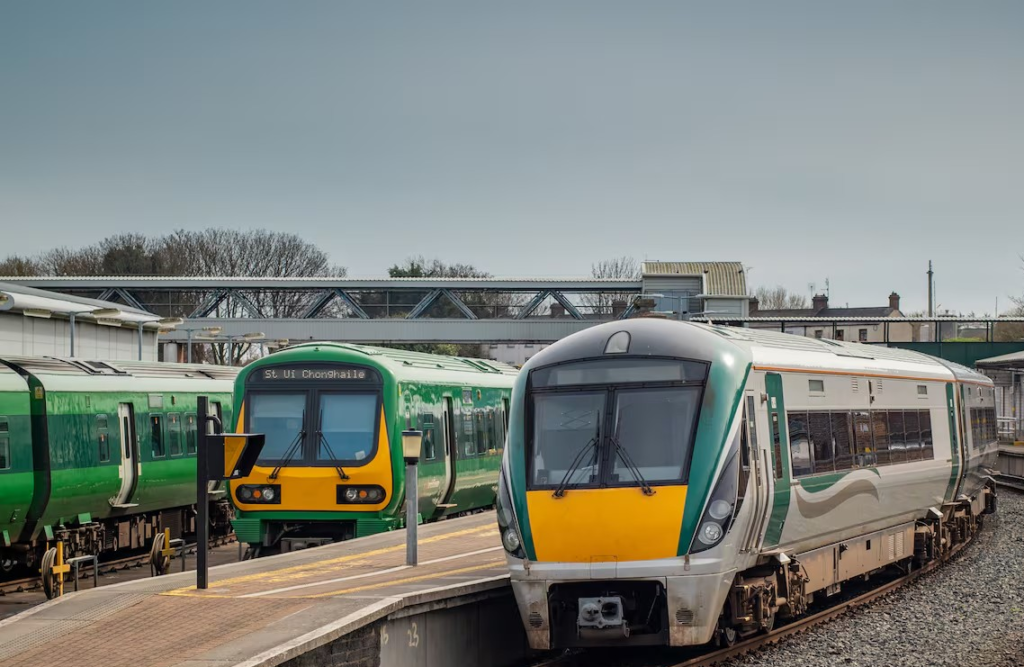At the end of July the Government published jointly with the Department of Infrastructure of Northern Ireland a document called All-Island Strategic Rail Review, authored by Ove Arup Ltd, a reputable engineering consultancy.
The review is “focused on how the rail network across the island could contribute to the decarbonisation of the island’s transport systems, promote sustainable connectivity into and between major cities, enhance regional accessibility, and support balanced regional development”. It includes a “vision statement”, six “overarching goals” and 13 objectives costed at €35 billion.
The document envisages an implementation programme over 25 years, and that €27.6 billion would be spent in the Republic, while the Northern administration would have to match that with £7 billion sterling. It is not at all clear, to put it politely, that the UK government, already committed to abandoning the northern leg of HS2, would fund the northern rail expansion envisaged in the review.
A good amount of the review is concerned with reopening lines abandoned in the last 50 or 60 years including the Mullingar-Cavan-Armagh line, the Waterford-Wexford line and the Mullingar-Athlone line. In Northern Ireland it envisages reopening a rail line from Derry and Letterkenny to Strabane, Omagh, Dungannon and Portadown. This would be linked with the reopened Cavan line via Monaghan and Clones.
At present 2.8 million of us, North and South, live within 5km of a railway station; the vision would, if fully implemented, raise that figure to 3.5 million. It would increase the number of “passenger journeys and mode share” on rail from 3 per cent today to “more than 6 per cent”.
For some reason the review published in 2024 calculated capital cost of implementation “in 2021 prices” at €32 billion, and increased annual current costs at €600 million, less increased revenues. These are stated to exclude costs associated with “existing spending commitments such as the DART+ programme and Metrolink subway in Dublin”. Metrolink is currently costed at more than €11 billion and a Dáil committee has warned that it could be as high as €20 billion. The Dart+ extension programme to Kildare, Maynooth and the M3 Parkway, originally approved in 2005, together with the expansion of the line to Drogheda and other improvements was costed in August 2023 at €3 billion, according to reports, up 25 per cent on the pre-Covid estimate.
A DART underground interconnector between Heuston and Connolly stations serving intermediate city centre stations was the subject of an Irish Rail application to An Bord Pleanála as far back as 2010, and was then priced at €4.5 billion. It was dropped from the 2018 National Development Plan. More than €100 million was spent on that project. The project is now revived as part of the strategic review, but only as a distant plan for the post-2042 era.
Intriguingly the new strategy review document now favours building a surface railway to serve Dublin Airport by linking it to the Dublin suburban network at Clongriffin. An Irish Rail executive recently informed the Oireachtas Transport Committee that this could be done by Irish Rail in less than five years. The committee was told that such a surface rail link to Dublin Airport would cost less than €1 billion.
But we are told that this investment would merely “complement” the massively expensive Metrolink subway project which the NTA is currently attempting to persuade An Bord Pleanála to authorise.
The strategic rail review plan does not include any radical expansion of the Dublin Luas network, presumably because it is concerned with heavy rail only. Whole swathes of suburban Dublin have no Luas service and planned lines have been deferred in the south city and to places like Lucan and Rathfarnham. Why? With new technology (including VLR -very light rail- or trackless tramsets), the Luas network could be expanded to cover most of Dublin’s suburbs rather than the minority of the city now served by the Luas Green and Red lines. The cost per kilometre would be a tiny fraction of the Swords-Airport-Dartmouth Metrolink now planned. If both a surface Luas service including Dublin Airport and the surface rail link to Clongriffin were built, would there still be a case for sinking €12 billion – or €20 billion – into Metrolink?
Many of these rail projects would presumably be at the expense of other transport projects, including the completion of the national motorway network to Sligo and Kerry. How would these proposals coexist beside plans to link up the M2 and M3 to the northwest, including the long-delayed A5 upgrade connecting Derry and Donegal towards the southeast and Dublin? Presumably the mooted outer orbital motorway for the Greater Dublin Area would also be discarded. Would there be funding for the long-delayed Galway ring road?
The strategy optimistically envisages switching much of the road freight traffic to trains operating from ports to inland rail freight hubs. Is that practical? Does it make sense to largely abandon road transport if we also plan for cars, vans and trucks powered by electricity, hydrogen and other renewables?

